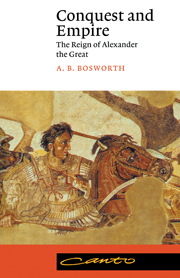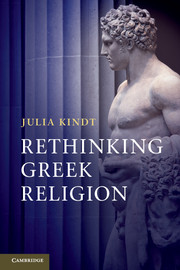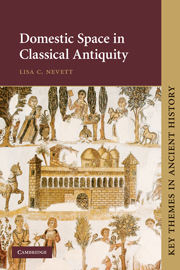Refine search
Actions for selected content:
23990 results in Ancient history
Part I - The lost historyof epinician
-
- Book:
- Reading the Victory Ode
- Published online:
- 05 October 2012
- Print publication:
- 09 August 2012, pp 1-108
-
- Chapter
- Export citation
Dedication
-
- Book:
- Reading the Victory Ode
- Published online:
- 05 October 2012
- Print publication:
- 09 August 2012, pp v-vi
-
- Chapter
- Export citation
Chapter 15 - Bacchylidean myths
- from Part III - Critical approaches to thevictory ode rhetoric, imagery, and narrative
-
-
- Book:
- Reading the Victory Ode
- Published online:
- 05 October 2012
- Print publication:
- 09 August 2012, pp 321-344
-
- Chapter
- Export citation
Chapter 1 - Early epinician: Ibycusand Simonides
- from Part I - The lost historyof epinician
-
-
- Book:
- Reading the Victory Ode
- Published online:
- 05 October 2012
- Print publication:
- 09 August 2012, pp 3-27
-
- Chapter
- Export citation
Chapter 8 - Representations of cultin epinician poetry
- from Part II - Contexts ofperformance and re-performance
-
-
- Book:
- Reading the Victory Ode
- Published online:
- 05 October 2012
- Print publication:
- 09 August 2012, pp 158-172
-
- Chapter
- Export citation
Figures
-
- Book:
- Reading the Victory Ode
- Published online:
- 05 October 2012
- Print publication:
- 09 August 2012, pp ix-x
-
- Chapter
- Export citation
Chapter 3 - Epinician sounds: Pindar and musical innovation
- from Part I - The lost historyof epinician
-
-
- Book:
- Reading the Victory Ode
- Published online:
- 05 October 2012
- Print publication:
- 09 August 2012, pp 58-82
-
- Chapter
- Export citation
Chapter 2 - The lostIsthmianodes of Pindar
- from Part I - The lost historyof epinician
-
-
- Book:
- Reading the Victory Ode
- Published online:
- 05 October 2012
- Print publication:
- 09 August 2012, pp 28-57
-
- Chapter
- Export citation
Chapter 16 - Reading Pindar
- from Epilogue
-
-
- Book:
- Reading the Victory Ode
- Published online:
- 05 October 2012
- Print publication:
- 09 August 2012, pp 347-364
-
- Chapter
- Export citation
Chapter 7 - Performance and re-performance
- from Part II - Contexts ofperformance and re-performance
-
-
- Book:
- Reading the Victory Ode
- Published online:
- 05 October 2012
- Print publication:
- 09 August 2012, pp 134-157
-
- Chapter
- Export citation

Conquest and Empire
- The Reign of Alexander the Great
-
- Published online:
- 05 August 2012
- Print publication:
- 26 March 1993

Rome, Pollution and Propriety
- Dirt, Disease and Hygiene in the Eternal City from Antiquity to Modernity
-
- Published online:
- 05 August 2012
- Print publication:
- 26 July 2012

Rethinking Greek Religion
-
- Published online:
- 05 August 2012
- Print publication:
- 02 August 2012

Money in Classical Antiquity
-
- Published online:
- 05 August 2012
- Print publication:
- 18 November 2010

She-Wolf
- The Story of a Roman Icon
-
- Published online:
- 05 August 2012
- Print publication:
- 29 March 2010

Domestic Space in Classical Antiquity
-
- Published online:
- 05 August 2012
- Print publication:
- 05 August 2010
Chapter 6 - ‘The sex appeal of the inorganic’: seeing, touching and knowing the divine during the Second Sophistic
-
- Book:
- Rethinking Greek Religion
- Published online:
- 05 August 2012
- Print publication:
- 02 August 2012, pp 155-189
-
- Chapter
- Export citation
Notes
-
- Book:
- The Psychology of the Athenian Hoplite
- Published online:
- 05 October 2012
- Print publication:
- 02 August 2012, pp 129-215
-
- Chapter
- Export citation
Index
-
- Book:
- Rethinking Greek Religion
- Published online:
- 05 August 2012
- Print publication:
- 02 August 2012, pp 232-235
-
- Chapter
- Export citation
Contents
-
- Book:
- Rethinking Greek Religion
- Published online:
- 05 August 2012
- Print publication:
- 02 August 2012, pp vii-vii
-
- Chapter
- Export citation
